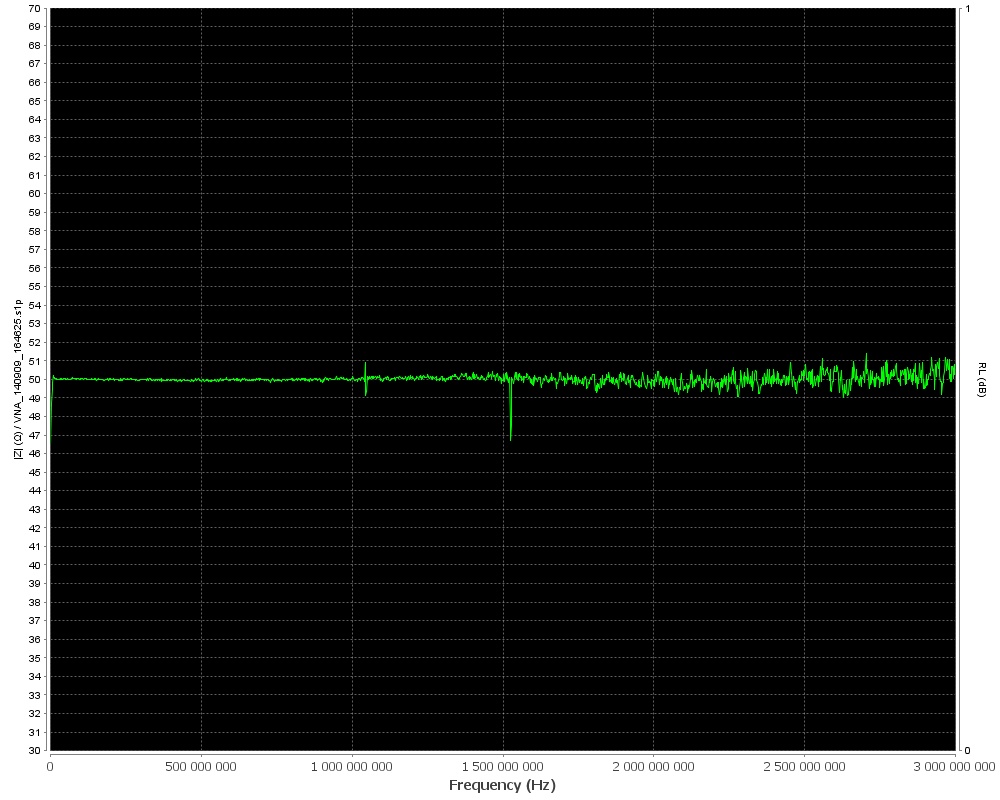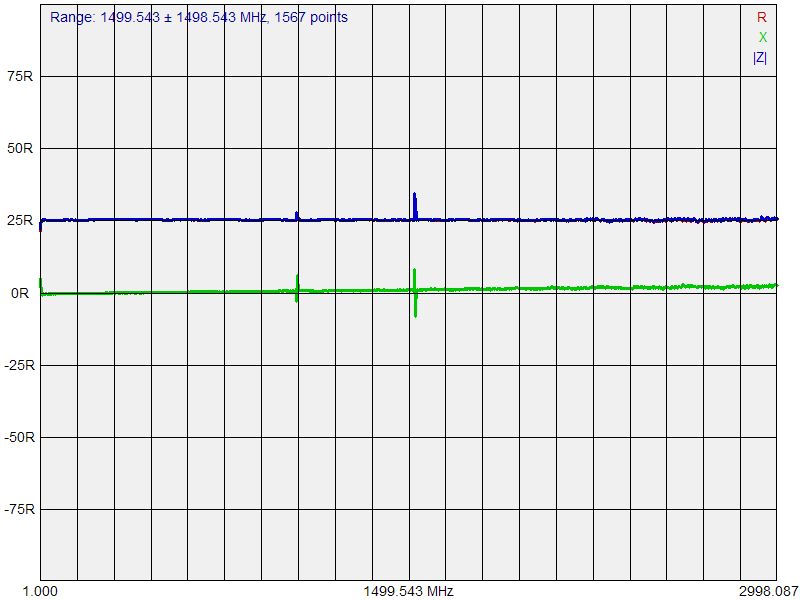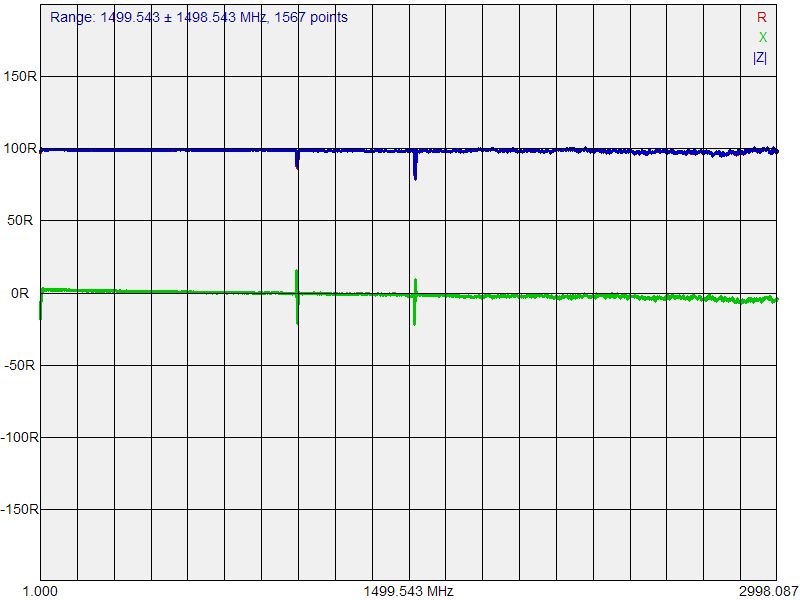Many years ago, I received an original miniVNA, my first antenna analyzer, and I was very hapy with it. Recently I was lucky to test a miniVNA Tiny, which is in fact much, much more advanced device than many competitor products available on the market. See the manufacturer’s website, http://miniradiosolutions.com .
For the testing, I used my standard set, consisting of the “short”, the 25.5 Ohm, the 50 Ohm, the 100 Ohm, and the “open” loads. These loads are made of SMA sockets and 0604 chip resistors.

I used an SMA-to-SMA male adapter to connect the loads to the miniVNA Tiny. I was using the vna/J software for taking measurements, and then I transferred the data to the AntScope program which I used to use. I also had a RigExpert AA-1400 as a reference device.
First of all, I calibrated the miniVNA Tiny with “open”, “short” and “load” (50 Ohm) standards. Immediately after this, I measured the 50 Ohm load:
On the above picture, you may easily see the deviations of |Z| in the range of plus-minus 1 Ohm at higher frequencies. In short: this analyzer has a very low noise compared to all devices I previously saw in my life. Unbelievable: only plus-minus 1 Ohm at 3 GHZ!!! I could just ignore spikes at about 1.04 and 1.53 GHz.
I did not disconnect the 50 Ohm load during the night and repeated the measurement next morning:
Now the |Z| had a much larger deviation. Conclusion: calibrate more often. After re-calibrating, the picture looked better again.
Here are some screen shots with different loads. Left: miniVNA Tiny (up to 3000 MHz). Right: RigExpert AA-1400 (up to 1400 MHz).
25.5 Ohm load:
50 Ohm load:
100 Ohm load:
Conclusion: Even though I have not fully studied the miniVNA Tiny yet, I can highly recommend it, especially for the laboratory use. A very, very good product.
73! de Denis UU9JDR
10-Sep-2014








